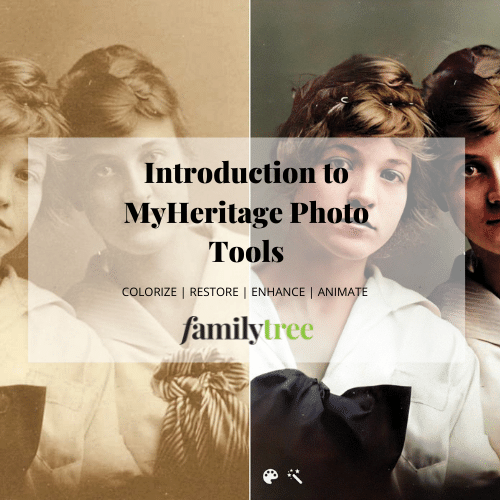| Genealogy and AI with Blaine Bettinger |
| This year, artificial intelligence (AI) has been thrust into the mainstream with tools like ChatGPT and Microsoft's new Bing chatbot sparking fearful and hopeful conversations in education, business, art and genealogy. Author and genealogist Blaine Bettinger joins us today to talk about the intersection of genealogy and AI, as well as a new Facebook group dedicated to the subject. AI has been in the news a lot lately. However, we've also heard that AI has been used in the past to generate census indexes and power some of the popular photo tools from MyHeritage. How should we define AI? In what other ways have genealogists knowing or unknowingly encountered it already? We can define artificial intelligence (AI) as the ability of a computer system to perform tasks that would otherwise require human intelligence, such as learning, problem-solving, and decision-making. From the automated analysis of DNA matches to census indexing and image colorization and restoration, genealogists have benefitted from AI for years. Some of these tools work silently behind the scenes, giving us automated results like AncestryDNA’s ThruLines or MyHeritage’s Theories of Family Relativity. Others, like image manipulation, are flashier. With the launch of large language models (LLMs) like ChatGPT, Microsoft’s Bing, and Google’s Bard, it’s become much more apparent that AI tools are going to have a substantial impact on genealogy and on our lives in general. How can genealogists use tools like ChatGPT in their day-to-day research? As of early 2023, the most important thing to remember about these large language models is that they are not search engines, and are not repositories of facts. They are a word prediction engine, which means that given a prompt, they predict the most likely response to that prompt in view of the gigabytes of data they were fed during training. Given a prompt like “Please tell me about the LaBounty family of Clinton County, New York,” ChatGPT will generate a response that sounds like factual information, but there was no factual search or retrieval. ChatGPT will not go out and find actual information about the LaBounty family. Instead, it will generate a string of words that sound – based on its training – like the most likely answer to the response. However, if I ask ChatGPT a broader question such as “how can genealogists use ChatGPT for genealogy?,” or “translate this text into English:[text],” I am likely to get a more reliable, text-based answer. As with any tool, of course, we should analyze the output critically to ensure it is accurate. In addition, these large language models can be very useful for drafting or revising text (“draft an email to my third cousin John Doe asking him to take a genetic genealogy test for me” or “improve this summary:[text],” or “generate a presentation proposal for LLMs and genealogy”). It can also be used to analyze text, such as “draft a family tree from this obituary: [text].” Some prompts require a bit of trial and error, but understanding that an LLM is not (in early 2023 at least!) intended to generate responses that require fact searching or retrieval from a database will guide your use of these tools. Tell us a little bit about your Facebook group. How did it come to be and what types of conversations do you have? I knew that genealogy was already using many AI tools, but the launch of ChatGPT in January led me to create a Facebook group called “Genealogy and Artificial Intelligence” so that we could harness group knowledge and explore the benefits and limitations of AI tools in the field of genealogy. And thanks to a wonderful group of genealogists, and to my co-admin Daniel Loftus, we’ve had wonderful conversations about both the benefits and – perhaps even more importantly – the limitations of emerging AI tools. We’re trying to tame the firehose of information and do our best to absorb the important aspects of this fascinating field! We’d love to see you there! (And yes, this article was drafted with the assistance of ChatGPT and Bard!) |














